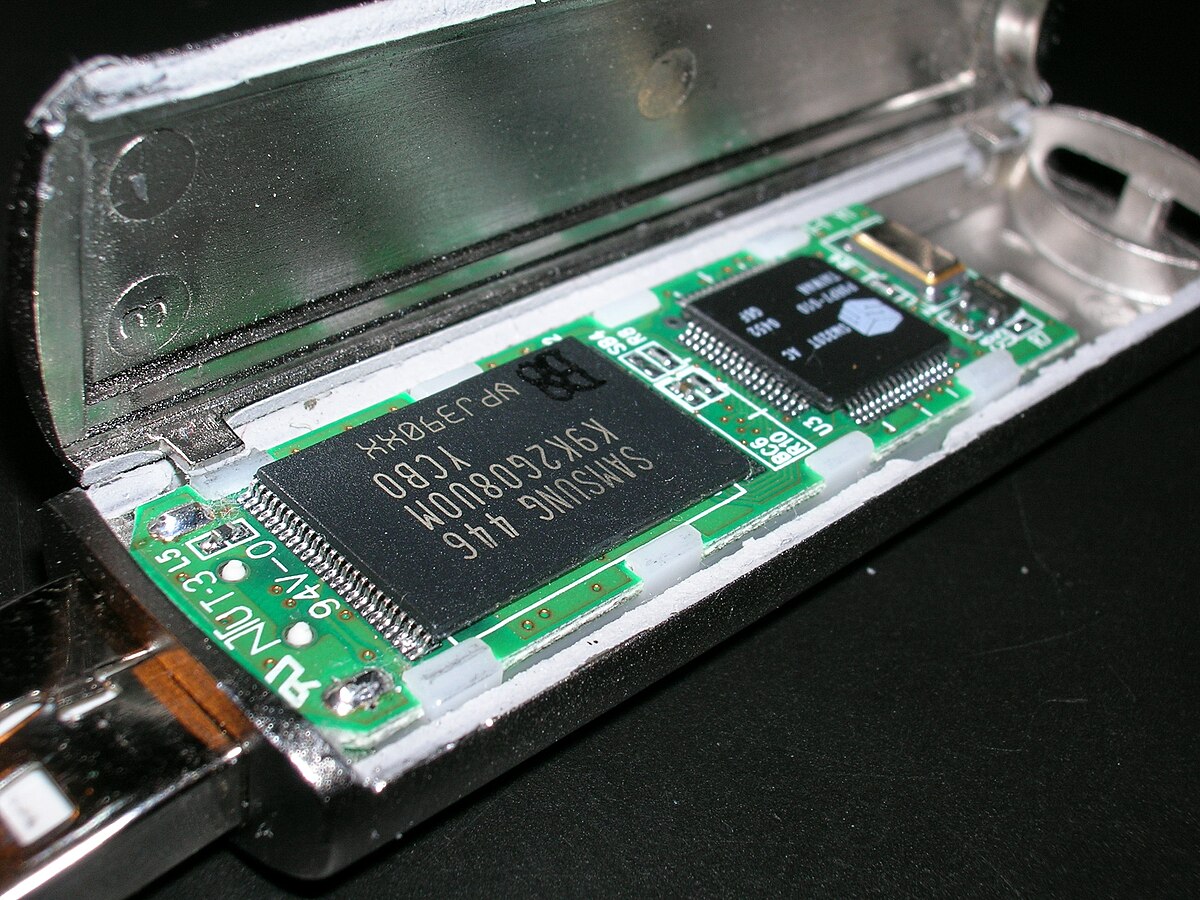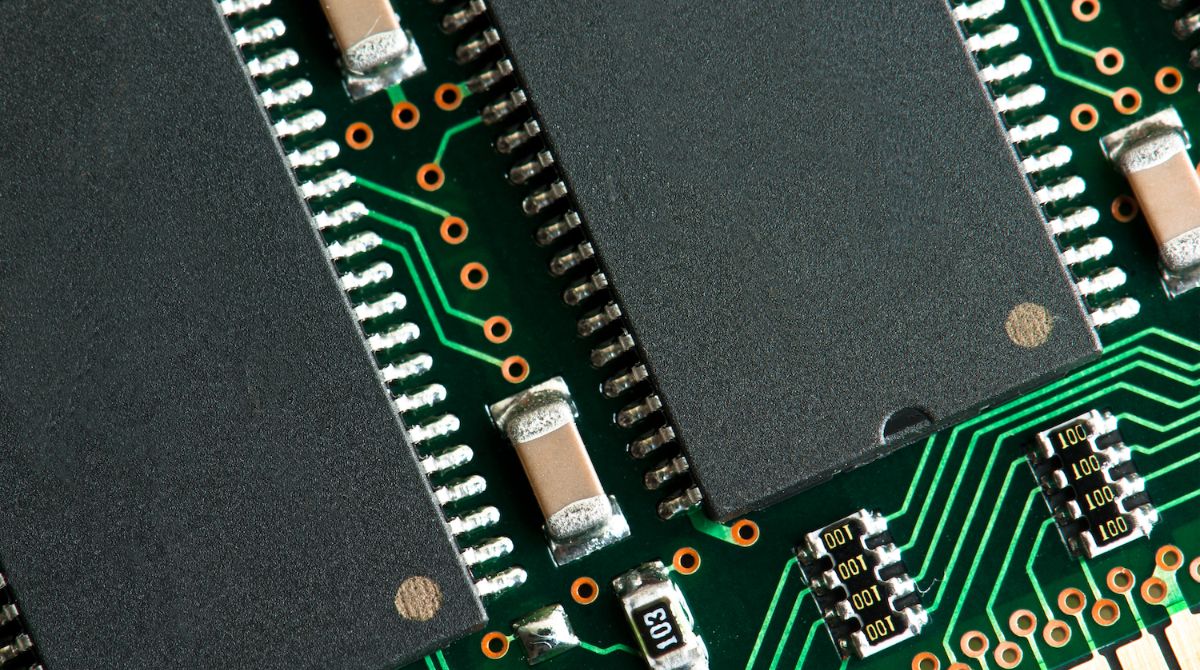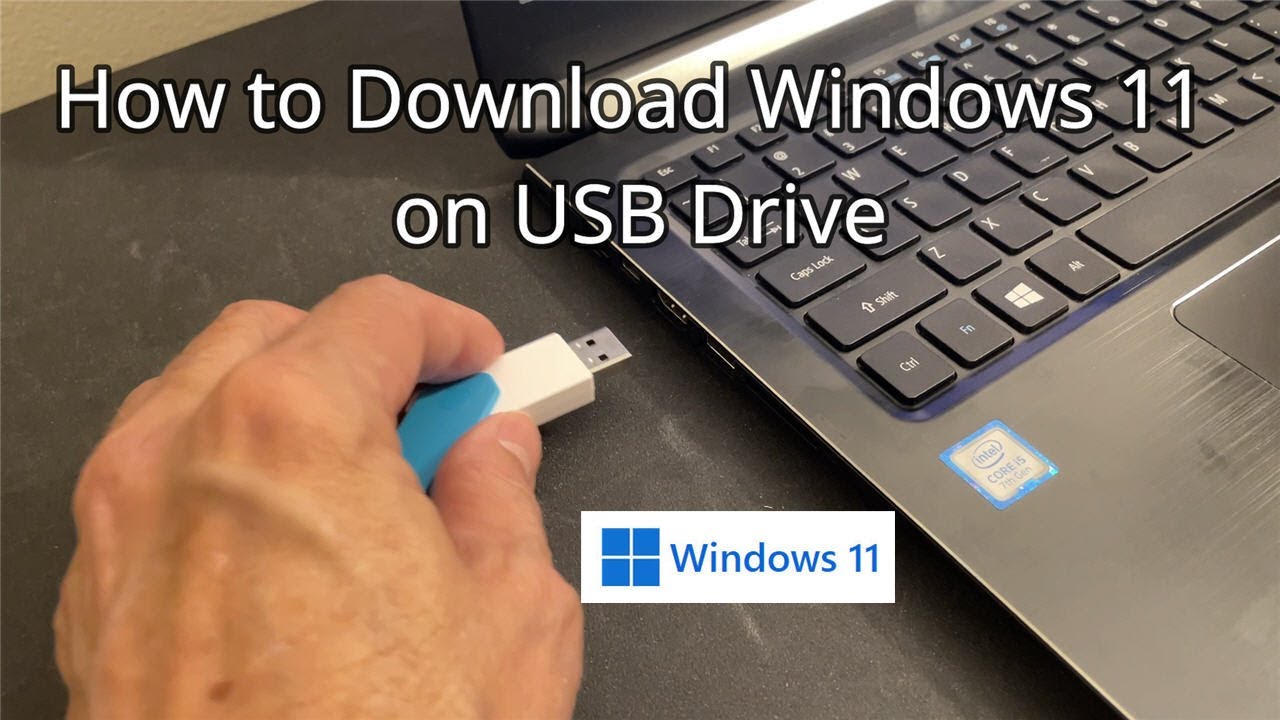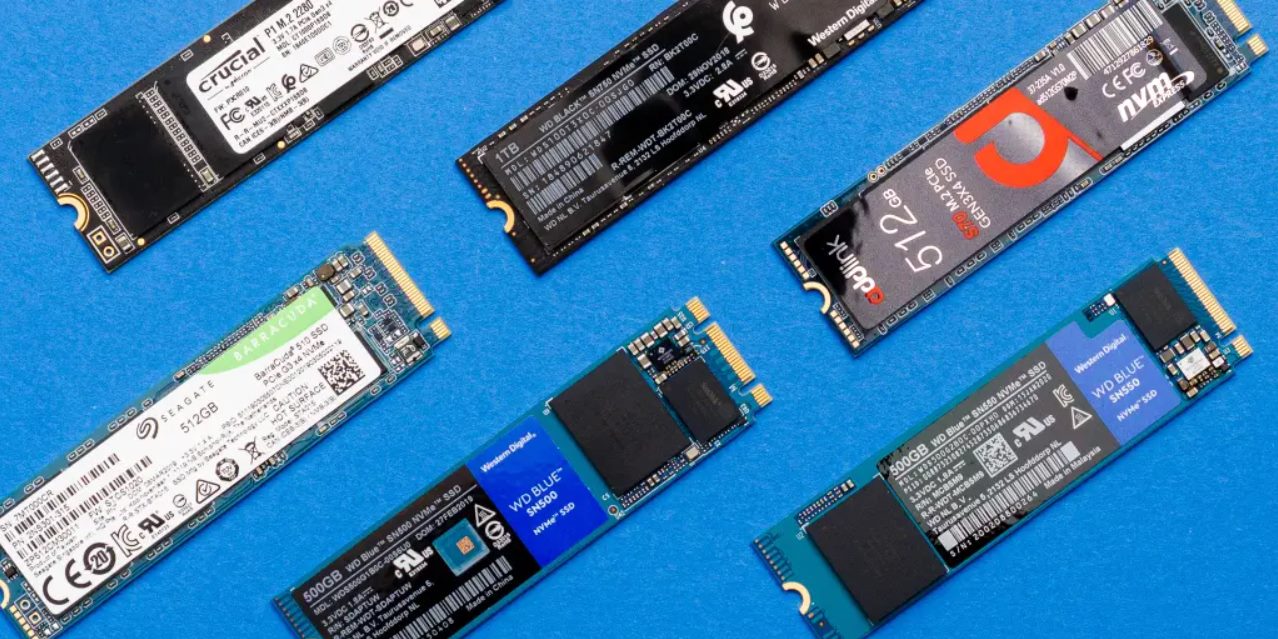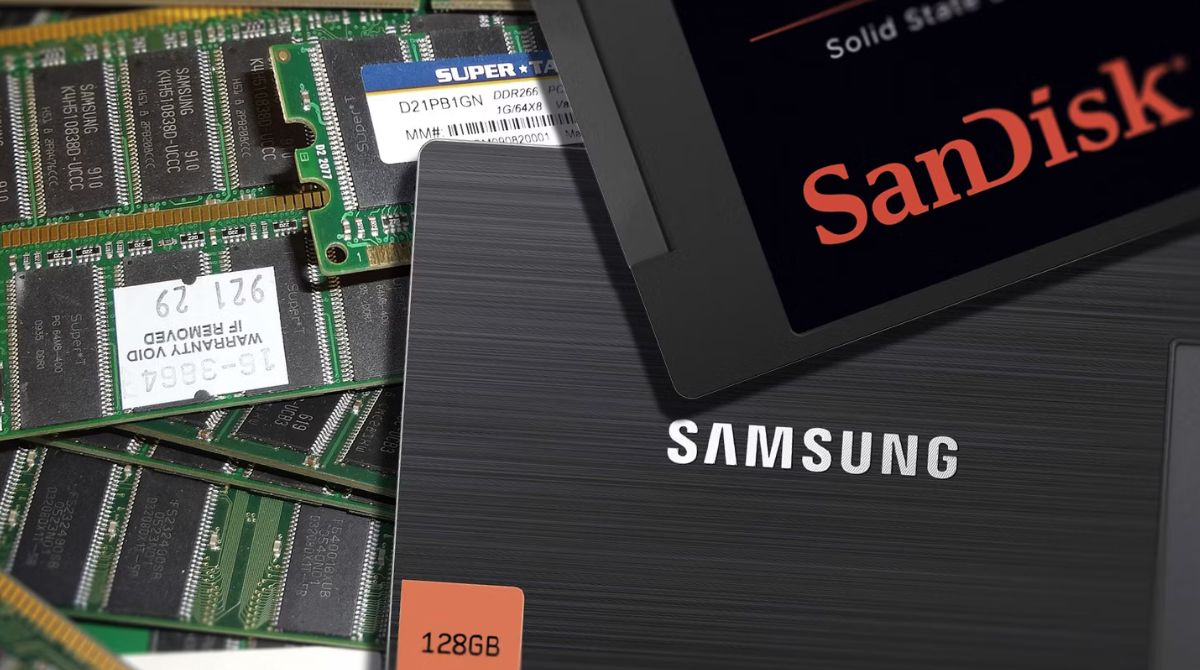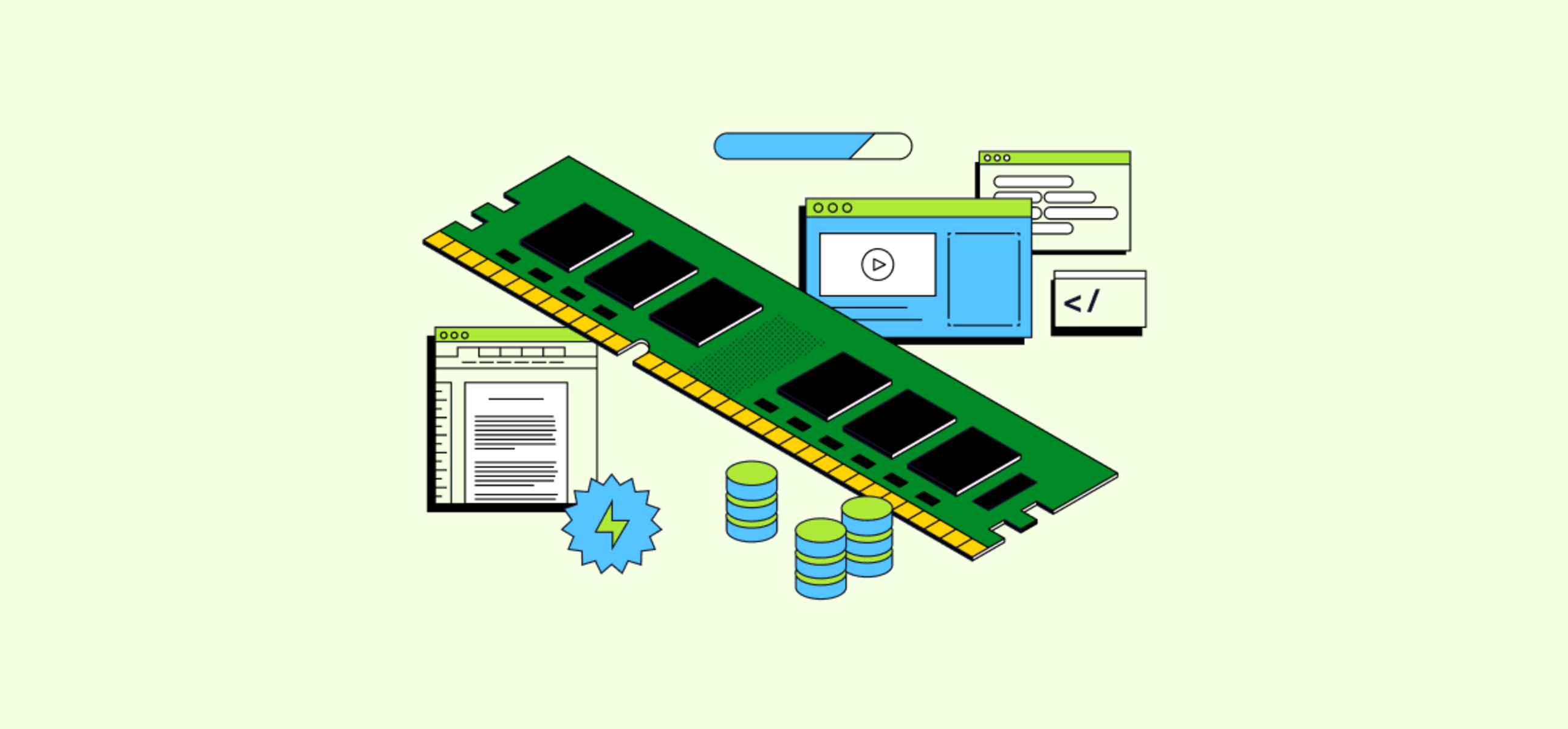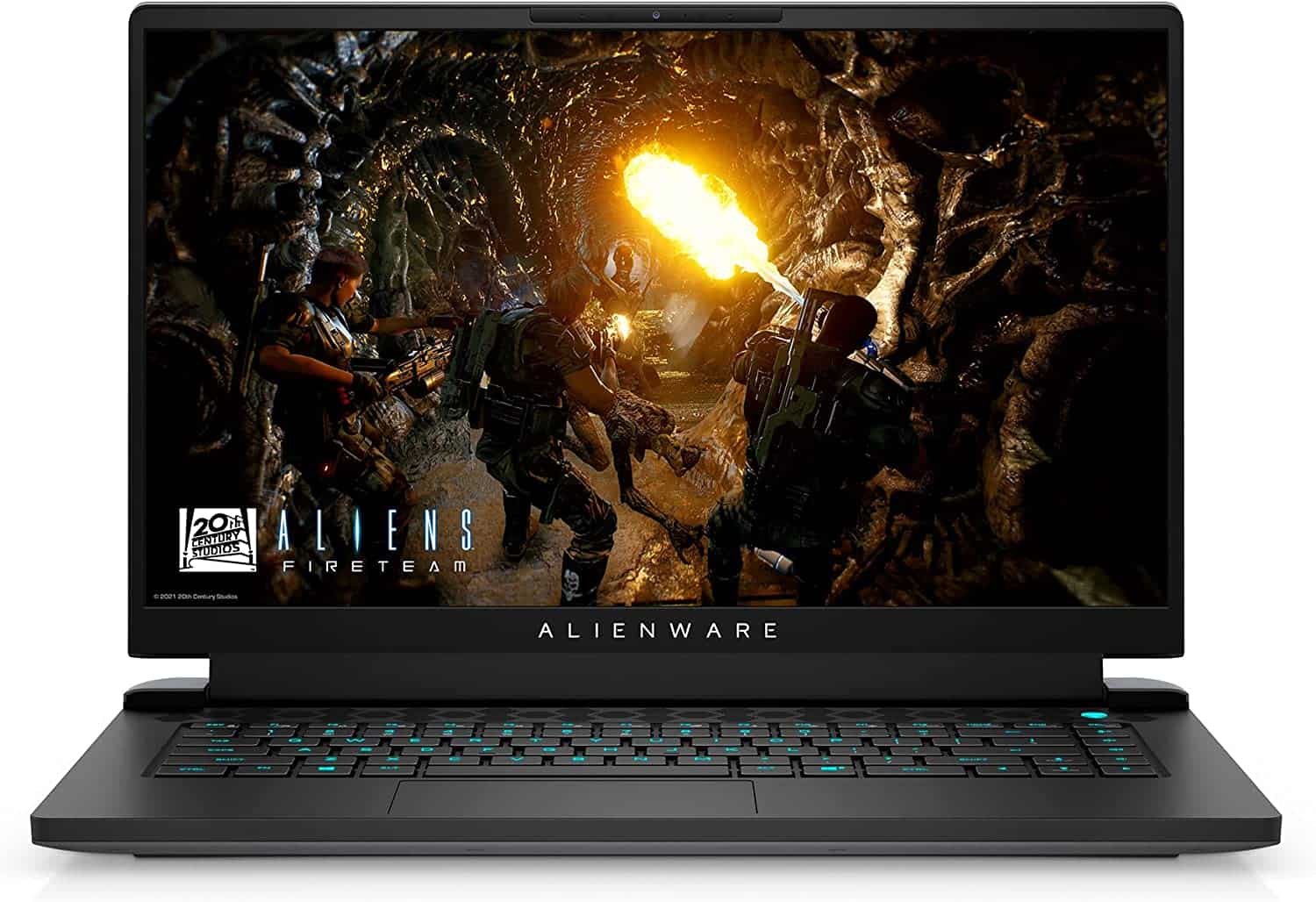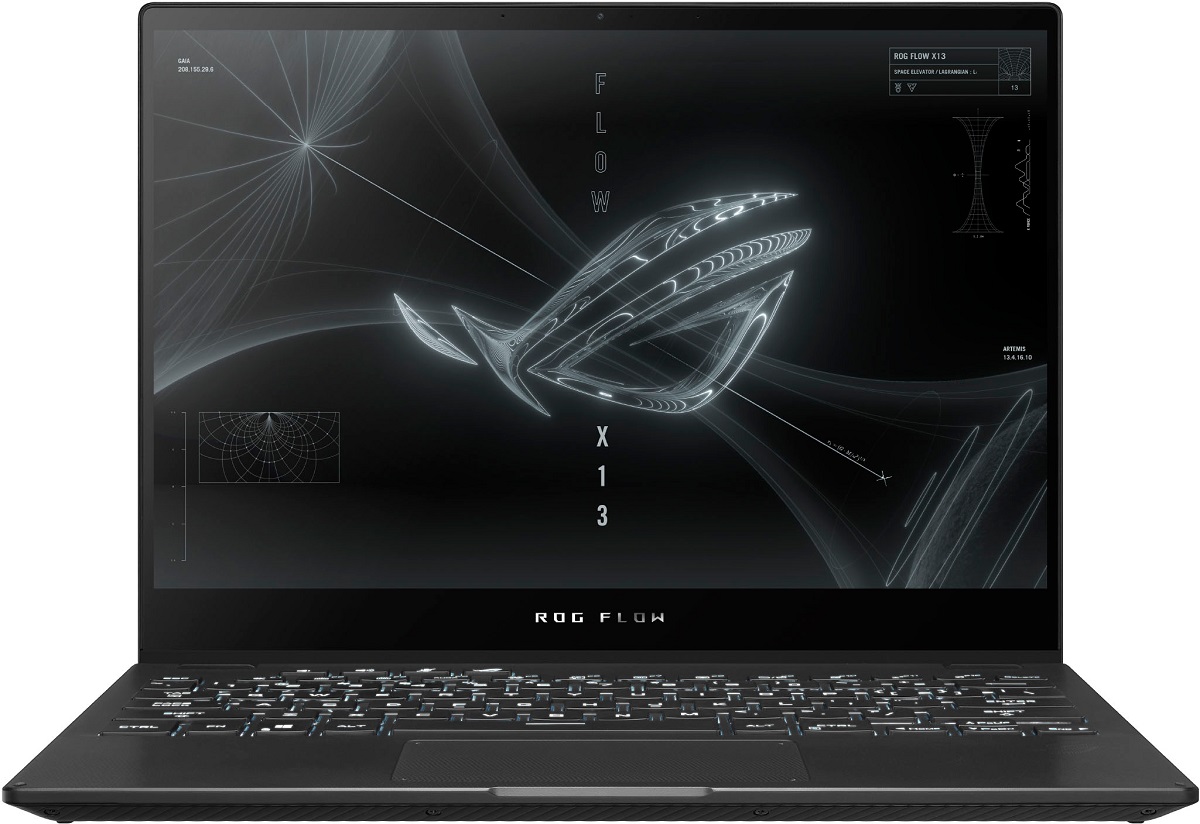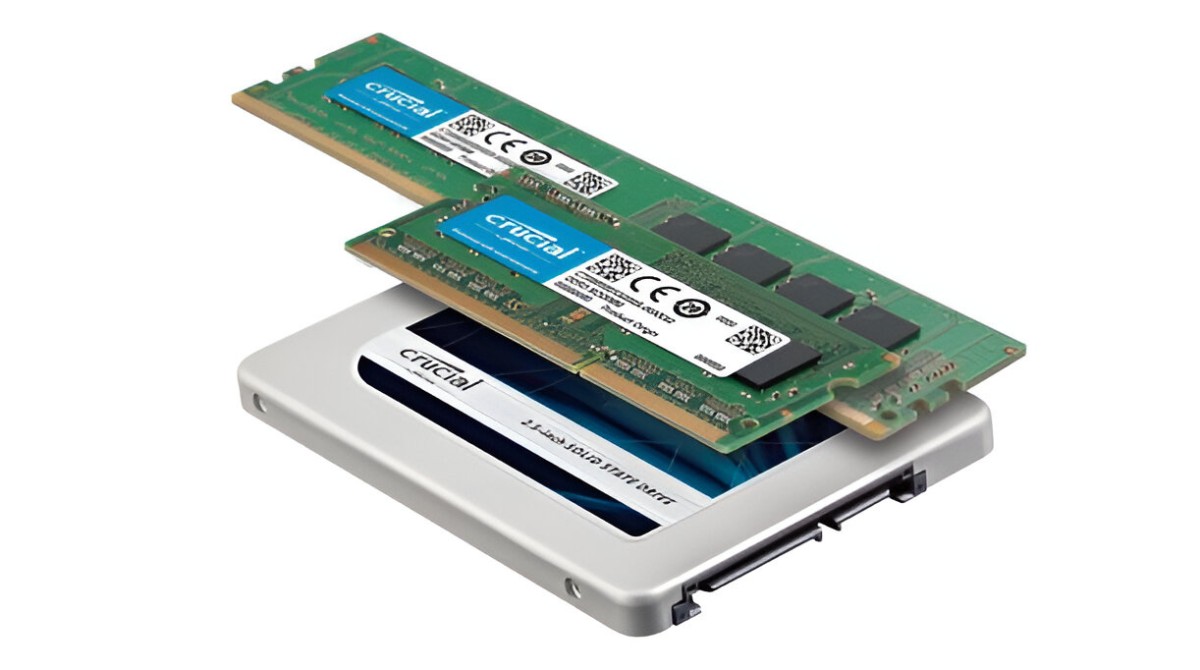Introduction
Welcome to this informative guide on how to use a flash drive for RAM. In today’s digital age, having sufficient memory on your computer is essential for smooth and efficient performance. Random Access Memory (RAM) plays a crucial role in the overall speed and responsiveness of your system. However, sometimes you may find yourself needing more RAM than your computer currently provides. This is where using a flash drive as an additional RAM can come in handy.
RAM is a type of computer memory that stores data that is being actively used by the operating system, applications, and programs. It is temporary storage that allows your computer to quickly access and process information. When your computer runs out of available RAM, it starts using a portion of the hard drive known as Virtual Memory, also known as the paging file. However, using the hard drive for virtual memory can significantly slow down your system’s performance.
A flash drive, also known as a USB drive or thumb drive, is a portable storage device that uses flash memory to store data. It is typically smaller in size compared to traditional hard drives and can be easily connected to any available USB port on your computer. While flash drives are primarily used for storing and transferring files, they can also be used to provide additional virtual memory or temporary storage, acting as a substitute for RAM.
Using a flash drive for RAM essentially extends the available memory on your computer, allowing it to handle more intensive tasks and run multiple programs simultaneously without experiencing a significant slowdown. However, it is important to note that using a flash drive as RAM is not as efficient as having physical RAM installed on your computer but it can provide a temporary solution if you’re in a pinch.
In the following sections, we will dive deeper into how using a flash drive for RAM works, the advantages and disadvantages of this method, and the step-by-step instructions for using a flash drive for RAM on both Windows and Mac operating systems. So, let’s get started and discover how you can maximize your computer’s performance by utilizing a humble flash drive.
What is RAM?
Before we delve into using a flash drive for RAM, let’s first understand what RAM actually is. RAM, short for Random Access Memory, is a crucial component of a computer’s hardware. It is a type of volatile memory that stores data and instructions that are actively being used by the operating system and applications.
RAM plays a vital role in a computer’s performance because it provides fast and temporary access to data, allowing the CPU (Central Processing Unit) to quickly retrieve and process information. Think of RAM as a workspace or a workbench for the CPU, where it can lay out and access the necessary tools and instructions required to perform tasks efficiently.
Every action you perform on your computer, from opening applications to browsing the web, requires the CPU to access data from RAM. The more RAM your computer has, the more data it can store and access simultaneously, resulting in improved multitasking capabilities and faster overall performance.
RAM is different from permanent storage devices such as hard drives or solid-state drives (SSDs). Unlike these storage devices, RAM is volatile, meaning that its contents are wiped out when the computer is turned off or restarted. This allows the RAM to be quickly refreshed and ready to store new data once the computer boots up again.
RAM is typically installed on the motherboard of a computer and comes in different capacities, ranging from a few gigabytes (GB) to several terabytes (TB) in high-end machines. Modern operating systems and software applications have increased in complexity and demand more RAM to run smoothly.
When the amount of RAM on a computer is not sufficient to handle the tasks at hand, the system may start using the hard drive as a form of virtual memory, which is much slower. This can result in sluggish performance, longer loading times, and increased disk usage.
Now that we have a better understanding of what RAM is and its importance in computer performance, let’s explore how using a flash drive as additional RAM can help boost your system’s capabilities.
What is a Flash Drive?
A flash drive, also known as a USB drive or thumb drive, is a portable storage device that uses flash memory to store data. It is a small and compact device that can be easily connected to any available USB port on your computer. Flash drives have become incredibly popular due to their convenience, portability, and versatility.
Flash drives are typically made up of a small printed circuit board encased in a plastic or metal shell. The circuit board houses the flash memory chip, which is responsible for storing and retrieving data. The outer shell of the flash drive usually includes a protective cap or a retractable connector to shield the USB connector when not in use.
One of the significant advantages of flash drives is their high storage capacity. They are available in a wide range of sizes, from a few gigabytes (GB) to several terabytes (TB) in larger models. This allows you to store and transfer large files, documents, photos, videos, and more.
Flash drives have revolutionized the way we store and transport data. Unlike traditional storage methods such as floppy disks or CDs, flash drives have no moving parts, making them more durable and less prone to data loss. They can withstand shock, vibration, and extreme temperatures, making them ideal for on-the-go use or backup storage.
Another benefit of flash drives is their compatibility with various devices. They can be used with computers, laptops, tablets, gaming consoles, and even some modern smart TVs. Flash drives utilize the Universal Serial Bus (USB) interface, which is supported by almost all modern devices.
In addition to storage, flash drives can also be used to run portable applications. You can install programs and software directly on the flash drive, allowing you to carry your favorite applications and settings with you wherever you go. This is particularly useful when using public computers or shared workstations.
With advancements in technology, some flash drives now offer additional features such as encryption, password protection, and biometric authentication, ensuring the security and privacy of your data.
Now that we’ve explored what a flash drive is and its various advantages, let’s move on to understanding how it can be used to expand your computer’s available RAM.
How does using a Flash Drive for RAM work?
Using a flash drive as additional RAM is a technique known as “ReadyBoost” on Windows and “Optimize Storage” on Mac. It allows you to utilize the storage capacity of the flash drive to increase the available virtual memory on your computer.
When your computer runs out of physical RAM, it starts using a portion of the hard drive as virtual memory, also known as the paging file. This process helps prevent your computer from crashing when there is insufficient RAM to handle the ongoing tasks.
Using a flash drive for RAM works by configuring your operating system to use the flash drive as additional virtual memory. The operating system treats the flash drive as an extension of your computer’s RAM, allowing it to store temporary data and free up some physical RAM for more demanding tasks.
When data needs to be read or written from virtual memory, the operating system will access it from the flash drive instead of the hard drive, resulting in faster data retrieval and improved system performance. However, it’s important to note that using a flash drive for virtual memory is not as efficient as having physical RAM installed on your computer, as flash drives have slower read/write speeds compared to RAM modules.
Operating systems like Windows and Mac have built-in features that allow you to use a flash drive for virtual memory. By following the proper steps and configuring the settings, you can effectively use the flash drive as an extension of your computer’s RAM.
It’s worth mentioning that not all flash drives are suitable for use as virtual memory. To ensure optimal performance, it’s recommended to use a flash drive with fast read and write speeds, preferably USB 3.0 or higher. Additionally, the capacity of the flash drive should be sufficient to handle the virtual memory requirements of your system.
Now that we understand how using a flash drive for RAM works, let’s explore the advantages and disadvantages of implementing this technique.
Advantages of using a Flash Drive for RAM
Using a flash drive as additional RAM can offer several benefits for your computer’s performance and overall user experience. Let’s explore some of the advantages of implementing this technique:
- Cost-effective: Upgrading physical RAM can be expensive, especially if you’re looking to significantly increase your system’s memory. Utilizing a flash drive as RAM provides a more cost-effective solution, as you can often find affordable flash drives with large storage capacities.
- Easy to set up: Configuring a flash drive to work as additional RAM is a relatively simple process. Most operating systems provide built-in features that allow you to enable ReadyBoost (Windows) or Optimize Storage (Mac) which guide you through the setup process with just a few clicks.
- Improved multitasking: By using a flash drive for RAM, you can enhance your computer’s multitasking capabilities. With additional virtual memory, your computer can handle more intensive tasks simultaneously, allowing you to run multiple applications and programs without experiencing significant performance slowdowns.
- Boosts system performance: When your computer runs out of physical RAM, using virtual memory provided by a flash drive can prevent your system from becoming sluggish or freezing. By offloading some of the data from RAM to the flash drive, you can free up physical memory for more critical tasks and maintain smoother overall performance.
- Portable solution: Flash drives are compact and portable, making them a convenient solution for increasing virtual memory on the go. You can easily insert the flash drive into any available USB port on various computers, allowing you to enjoy improved performance on different devices without the need for additional hardware upgrades.
While utilizing a flash drive for additional RAM offers several advantages, it’s important to consider the limitations and potential drawbacks. In the next section, we will explore the disadvantages of using a flash drive for RAM.
Disadvantages of using a Flash Drive for RAM
While using a flash drive as additional RAM can provide a temporary solution to boost your computer’s performance, it’s important to be aware of the limitations and potential drawbacks associated with this technique. Here are some disadvantages to consider:
- Slower performance: Flash drives have slower read and write speeds compared to physical RAM. This means that accessing data from the flash drive may result in slower performance, especially when running memory-intensive applications or performing tasks that require frequent data retrieval and processing.
- Limited capacity: Flash drives typically have limited storage capacities compared to physical RAM modules. While larger capacity flash drives are available, they can be more expensive. If your computer requires a significant amount of additional memory, using a flash drive as RAM may not be sufficient to meet your needs.
- Wear and tear: Flash drives have a finite lifespan and can only endure a certain number of read and write cycles before they start to degrade. Using a flash drive as additional RAM will increase the number of writes, potentially shortening its lifespan over time.
- Compatibility issues: Not all computers or operating systems support the use of a flash drive as additional RAM. It’s important to check the requirements and compatibility guidelines provided by the operating system manufacturer to ensure that your computer can effectively utilize a flash drive for virtual memory.
- Security risks: If you plan on using a flash drive as RAM with sensitive or confidential data, there is a possibility that it could be accessed by unauthorized individuals. It’s essential to take appropriate measures to protect your data and ensure the security of your flash drive, such as using encryption or password protection.
Considering these disadvantages, it’s important to weigh the benefits and drawbacks before deciding to use a flash drive as additional RAM. If your computer requires a significant memory upgrade or if you require high-speed performance for memory-intensive tasks, investing in physical RAM modules may be a more suitable long-term solution.
Now that we’ve explored both the advantages and disadvantages of using a flash drive for RAM, let’s proceed to the next section where we will provide step-by-step instructions on how to use a flash drive for RAM on Windows operating systems.
Steps to use a Flash Drive for RAM on Windows
If you are using a Windows operating system, you can take advantage of the ReadyBoost feature to use a flash drive as additional RAM. Follow these steps to set it up:
- Insert your compatible flash drive into an available USB port on your computer.
- Open Windows Explorer and locate the flash drive (usually labeled as a removable drive).
- Right-click on the flash drive and select “Properties” from the context menu.
- In the Properties window, navigate to the “ReadyBoost” tab.
- Under the ReadyBoost section, select the option “Use this device”.
- Adjust the slider to choose how much space on the flash drive you want to allocate for ReadyBoost. It’s recommended to use at least 1-3 times your computer’s physical RAM size.
- Click on “Apply” and then “OK” to save the changes.
- Windows will optimize the flash drive for ReadyBoost and use it as additional virtual memory.
It’s important to note that the performance boost from using a flash drive as additional RAM may vary depending on the speed of the flash drive, the amount of available RAM on your computer, and the specific tasks you are performing.
If you decide later that you no longer want to use the flash drive for ReadyBoost, you can follow the same steps mentioned above and choose the option “Do not use this device” or simply remove the flash drive from your computer.
Now that you know how to use a flash drive for RAM on Windows, let’s move on to the next section where we will provide step-by-step instructions for using a flash drive for RAM on Mac.
Steps to use a Flash Drive for RAM on Mac
If you are using a Mac computer, you can utilize the “Optimize Storage” feature to use a flash drive as additional RAM. Here are the steps to set it up:
- Insert your compatible flash drive into an available USB port on your Mac.
- Open the Apple menu and go to “System Preferences”.
- Select “Memory” or “Memory and Startup Disk”.
- In the Memory tab, click on the “Optimize” or “Optimize Storage” button.
- A list of connected drives will appear. Choose your flash drive from the list.
- Adjust the slider to determine how much space on the flash drive you want to allocate for virtual memory. It’s recommended to use at least 1-3 times your computer’s physical RAM size.
- Click on “Optimize” or “OK” to apply the changes.
Once you’ve completed these steps, your Mac will use the flash drive as additional virtual memory, helping enhance system performance.
Keep in mind that the actual performance boost may vary depending on the speed of the flash drive, the available RAM on your computer, and the tasks you are performing.
If you decide later that you no longer want to use the flash drive for virtual memory, you can repeat the above steps and adjust the slider to “off” or simply remove the flash drive from your Mac.
Now that you know how to use a flash drive for RAM on both Windows and Mac, let’s proceed to the next section where we will provide some tips for optimizing flash drive performance as RAM.
Tips for optimizing Flash Drive performance as RAM
Using a flash drive as additional RAM can be a helpful solution to boost your computer’s performance. To optimize the performance of your flash drive as RAM, consider the following tips:
- Choose a fast and reliable flash drive: Select a flash drive with higher read/write speeds to ensure faster data access and retrieval. USB 3.0 or higher is recommended for improved performance.
- Allocate adequate space: Allocate enough space on the flash drive for virtual memory. Ideally, allocate at least 1-3 times the size of your computer’s physical RAM.
- Keep your flash drive free of unnecessary files: Regularly clean up your flash drive, removing any unnecessary files or folders. This will help optimize its performance and ensure that it has enough space for virtual memory.
- Enable write caching: Check your flash drive’s settings and make sure write caching is enabled. This can improve its performance by allowing the system to write data to the flash drive more efficiently.
- Avoid removing the flash drive while in use: To prevent data corruption or system errors, always properly eject or safely remove the flash drive before unplugging it from your computer. Removing it while it’s being used as virtual memory can cause instability.
- Regularly update your operating system: Keep your operating system up to date with the latest patches and updates. This ensures optimal compatibility and performance when using a flash drive as additional RAM.
- Consider using faster flash drive technologies: If you require even higher performance, consider using faster flash drive technologies, such as USB 3.1 or Thunderbolt, which offer faster data transfer speeds.
- Monitor system performance: Keep an eye on your system’s performance using task manager or system monitoring software. This will help you identify any potential bottlenecks or issues related to using a flash drive as RAM.
By following these tips, you can optimize the performance of your flash drive when used as additional RAM and ensure a smoother computing experience.
Now that you’re equipped with these optimization tips, you can make the most out of using a flash drive as RAM. In the next section, we will conclude our guide on using a flash drive for RAM.
Conclusion
Using a flash drive as additional RAM can be a beneficial solution to enhance your computer’s performance, especially when you need more memory for multitasking or running memory-intensive applications. While it may not match the efficiency of physical RAM, it provides a cost-effective and portable option to boost your system’s capabilities.
In this guide, we’ve explored what RAM is and how a flash drive works. We also delved into the advantages and disadvantages of using a flash drive for RAM, as well as provided step-by-step instructions for both Windows and Mac users.
Remember, when using a flash drive as RAM, selecting a fast and reliable flash drive with sufficient storage capacity is crucial. Additionally, regularly optimizing your flash drive’s performance by keeping it free of unnecessary files and enabling write caching can help improve its efficiency as virtual memory.
However, it’s important to note that using a flash drive as RAM is not a substitute for physically upgrading your computer’s memory. If you require a significant memory boost or if you engage in memory-intensive tasks regularly, investing in physical RAM modules may offer better long-term performance.
We hope this guide has provided you with a clear understanding of using a flash drive for RAM and has equipped you with the necessary knowledge to implement this technique effectively. By following the tips and instructions provided, you can optimize your computer’s performance and make the most out of your flash drive’s capabilities.
So, go ahead and explore the possibilities of enhancing your computer’s memory with a humble flash drive, and enjoy a smoother and more efficient computing experience.







